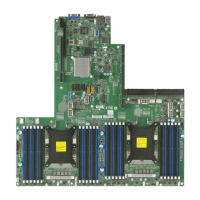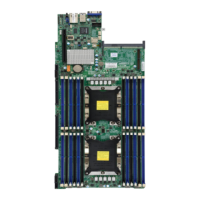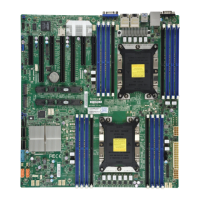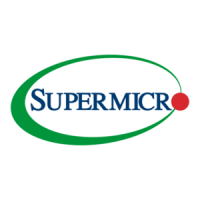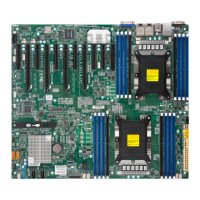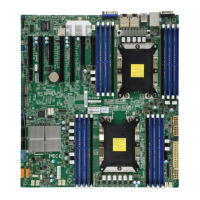Appendix D: UEFI BIOS Recovery
123
Appendix D
UEFI BIOS Recovery
Warning: Do not upgrade the BIOS unless your system has a BIOS-related issue. Flashing
the wrong BIOS can cause irreparable damage to the system. In no event shall Supermicro
be liable for direct, indirect, special, incidental, or consequential damages arising from a BIOS
update. If you need to update the BIOS, do not shut down or reset the system while the BIOS
is updating to avoid possible boot failure.
D.1 Overview
The Unied Extensible Firmware Interface (UEFI) provides a software-based interface
between the operating system and the platform rmware in the pre-boot environment. The
UEFI specication supports an architecture-independent mechanism that will allow the UEFI
OS loader stored in an add-on card to boot the system. The UEFI offers clean, hands-off
management to a computer during system boot.
D.2 Recovering the UEFI BIOS Image
A UEFI BIOS ash chip consists of a recovery BIOS block and a main BIOS block (a main
BIOS image). The boot block contains critical BIOS codes, including memory detection and
recovery codes for the user to ash a new BIOS image if the original main BIOS image is
corrupted. When the system power is rst turned on, the boot block codes execute rst. Once
this process is completed, the main BIOS code will continue with system initialization and the
remaining POST (Power-On Self-Test) routines.
Note 1: Follow the BIOS recovery instructions below for BIOS recovery when the main
BIOS boot crashes.
Note 2: When the BIOS boot block crashes, you will need to follow the procedures
to make a Returned Merchandise Authorization (RMA) request. (For a RMA request,
please see section 3.5 for more information). Also, you may use the Supermicro Up-
date Manager (SUM) Out-of-Band (OOB) (https://www.supermicro.com.tw/products/
nfo/SMS_SUM.cfm) to reash the BIOS.
D.3 Recovering the BIOS Block with a USB Device
This feature allows the user to recover a BIOS image using a USB-attached device without
additional utilities used. A USB ash device such as a USB Flash Drive, or a USB CD/DVD
ROM/RW device can be used for this purpose. However, a USB Hard Disk drive cannot be
used for BIOS recovery at this time.

